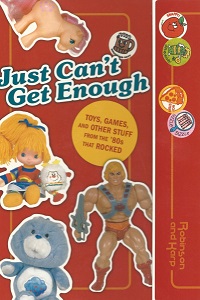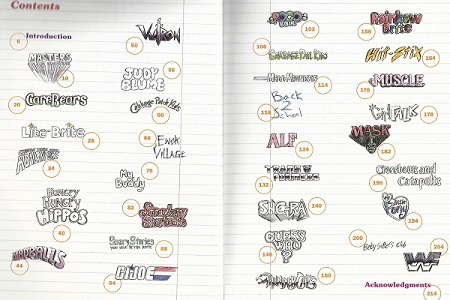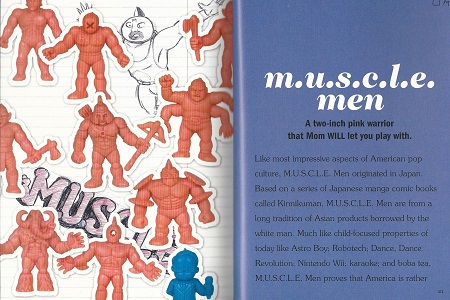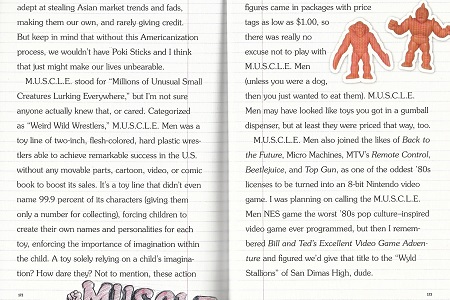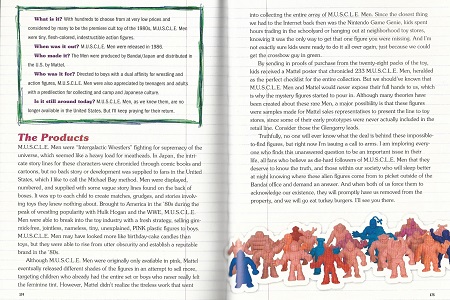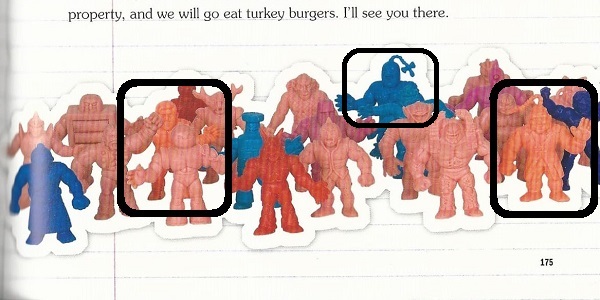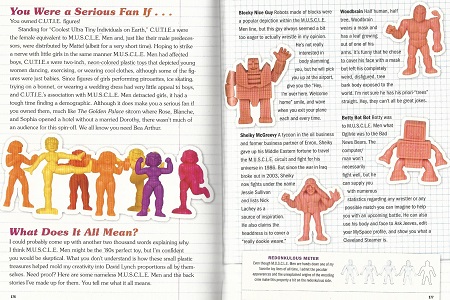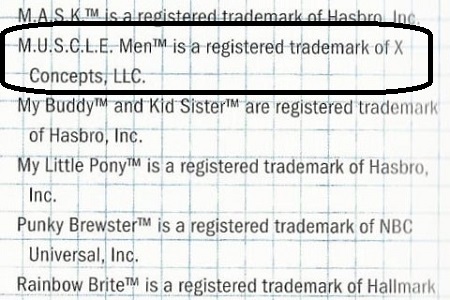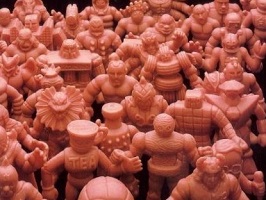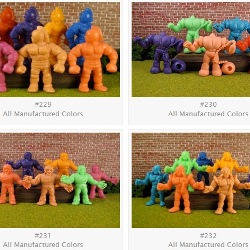The book was written by Matthew Robinson and Jensen Karp and published in 2007.
The year this book was published is critical in crafting a fair review. Nathan’s MUSCLE Page had come online in 1998. Mr. Karis took over the American Kinnikuman Information Archive on 3/24/02. That site eventually became LittleRubberGuys.com. I didn’t take my first stab at a M.U.S.C.L.E. website until March of 2005 and UofM didn’t start until June of 2009.
That tells me the only information, widely available, was very basic. Parts and Trees and cracking the M.U.S.C.L.E. color code was being constructed as this book came out. Around 2007 it is more likely that uninformed collectors were reading the I-Mockery articles than a good source of M.U.S.C.L.E. information.
It surprises me that M.U.S.C.L.E. is actually included in this book. Compared to the other brands in this book, M.U.S.C.L.E. is easily the least known – in my humble opinion.The inclusion of M.U.S.C.L.E. suggests to me that these guys really loved these figures.
The design of the book is a Trapper Keeper. It actually has a Velcro closure. Graphically the book is laid out like a notebook with drawings and stickers. For any child of the 1980’s there will be an instant nostalgia-induced smile.
The write-up about M.U.S.C.L.E. feels, understandably, stretched. The first three pages tell you the figures came from Japan and only two figures had names. I imagined the authors loved M.U.S.C.L.E., which is why it is included in the book. It feels like this opening was the space a more personal story could have been told.The write-up starts toward a more serious/factual tone on page 174.
But at that time so little information was known.The suggestion that I find most egregious is the “salesman sample” to explain “mystery figures.” It is one of the oldest, if not the oldest, theory.
But I have to take a step back. I have to remember this was published in 2007. The only “archaeological dig” had been conducted in 2003. Re-reading that it seems infantile, but it was new information at one time. It wasn’t until 2009 that we got some new M.U.S.C.L.E. information.
I imagine page 175 made you do a double-take. When I was looking at the book for the first time I audibly mumbled, “What the fuck?”There were three things that instantly jumped out at me. There were three non-M.U.S.C.L.E. figures in the group picture.
How did the authors make that mistake? Again, I assumed they loved the figures – maybe that’s my mistake. Could they not feel the difference between a keshi figure and a M.U.S.C.L.E. figure?
Or, maybe the authors had nothing to do with the photography?
Whatever the explanation, it is pretty absurd that non-M.U.S.C.L.E. figures made it into the M.U.S.C.L.E. section.I hate CUTIE’s. They are stupid. They are not a part of M.U.S.C.L.E. figures. However, I understand why they included them in the section.
Frankly, I think they needed it for filler. I feel even more confident in that assertion because page 177 is a total waste of space. The authors basically did there own I-Mockery section. Yuck.
The most interesting part of the book, for M.U.S.C.L.E. collectors, is the Acknowledgment section.It states that X Concepts LLC, NOT Mattel, owned the M.U.S.C.L.E. trademark. WHAT?!?!
Did Mattel not own the trademark for a period of time? Or did the authors make a mistake?
Thinking about the trademark made me think of Super7’s M.U.S.C.L.E. figures. Obviously they couldn’t use the Kinnikuman character. He couldn’t be the character coming off the top ropes. They only got the rights to the name.
Maybe that’s why the logo was removed from the 28-pack? I bet Mattel didn’t have the rights to that specific logo. I imagine Mattel caught it, not Bandai. They probably made the choice to remove it ASAP to avoid any problems.
Should you track down a copy of this book? No. It’s just not that good of a book if you’re a child of the 1980’s. It might be more interesting to my kids or future generations.
